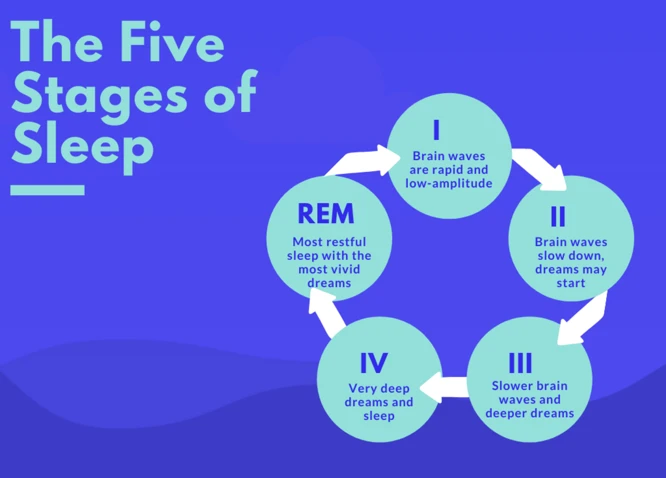Dreams have long fascinated and perplexed humans. They offer a window into the subconscious, revealing a realm of symbolism and hidden meanings. Analyzing dream symbols from a psychological perspective can provide valuable insights into our thoughts, emotions, and desires. In this article, we will delve into the significance of dreams and explore how psychologists interpret dream symbols. We will discuss common symbols and their possible meanings, as well as the personalized symbolism that may be unique to each individual. Additionally, we will examine different psychological perspectives on dreaming, including the Freudian and Jungian approaches. Finally, we will provide practical tips for analyzing dream symbols, such as keeping a dream journal and exploring emotional associations. By understanding the psychological significance of dream symbols, we can gain a deeper understanding of ourselves and our inner world.
The Significance of Dreams
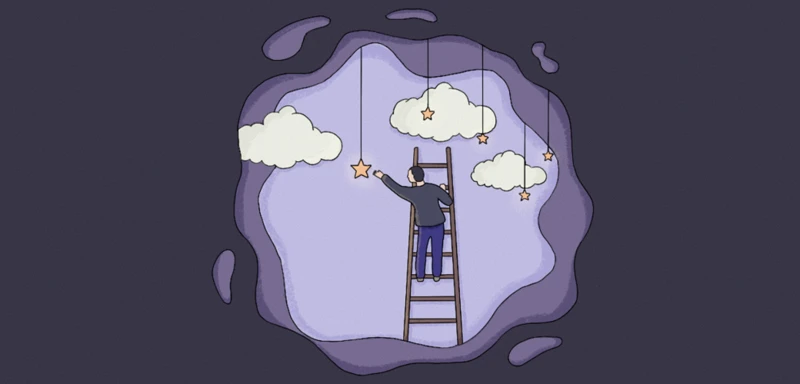
Dreams hold immense significance in the realm of psychology, offering a doorway into the depths of our minds and emotions. They provide a unique lens through which we can explore the unconscious and uncover hidden aspects of ourselves. Understanding the role of dreams in psychology is crucial for self-discovery and mental wellbeing. Dreams and the unconscious mind have a powerful connection, with dreams acting as a channel for our deepest desires, fears, and unresolved conflicts. They serve as a means of processing and integrating experiences, emotions, and memories, offering a pathway towards healing and personal growth. By delving into the symbolism and meanings behind our dreams, we can gain valuable insights into our inner world and nurture our mental wellbeing.
Understanding the Role of Dreams in Psychology
Understanding the role of dreams in psychology is crucial for gaining insights into the complex workings of the human mind. Dreams serve as a window into our subconscious, illuminating aspects of ourselves that may be hidden from our conscious awareness. Dreams and the unconscious mind have a profound relationship, as dreams are believed to be influenced by unconscious thoughts, desires, and emotions that are not readily accessible in our waking state. They provide a platform for the mind to process and integrate information, allowing us to make sense of our experiences and emotions. Dream analysis can greatly contribute to our mental wellbeing, as it allows us to explore and understand the underlying factors that may be influencing our thoughts, behaviors, and emotions. By delving into the symbolism and meanings behind our dreams, we can gain valuable insights into ourselves and promote self-discovery. This understanding can help us navigate challenges, deal with unresolved issues, and promote personal growth and self-awareness. The significance of dreams in psychology extends beyond the realm of self-reflection; they also hold potential in the therapeutic context, where they can be utilized in psychoanalysis and other therapeutic approaches to gain deeper insights into a person’s psyche. Recognizing and valuing the role of dreams in psychology provides us with a powerful tool for understanding ourselves and achieving mental wellbeing. /understanding-dream-interpretation-self-discovery/
Unconscious Symbolism in Dreams
Unconscious symbolism in dreams plays a pivotal role in unraveling the mysteries of our subconscious mind. As we sleep, our unconscious thoughts, emotions, and desires manifest through vivid and often symbolic imagery. These symbols can be highly personal and unique to each individual, reflecting their own life experiences, memories, and belief systems. The unconscious mind communicates its messages through these symbols, often in the form of metaphors or allegorical representations. For example, a dream about flying could represent a sense of liberation, while falling might symbolize a loss of control or anxiety. Analyzing these symbols requires delving deep into the individual’s personal associations and understanding the context in which the symbols arise. By deciphering the unconscious symbolism in dreams, we gain insight into our deepest fears, aspirations, and unresolved conflicts, which can contribute to /dreams-and-mental-wellbeing/ and personal growth. It is important to approach dream analysis with an open mind and a willingness to explore the hidden layers of our psyche.
Interpreting Dream Symbols
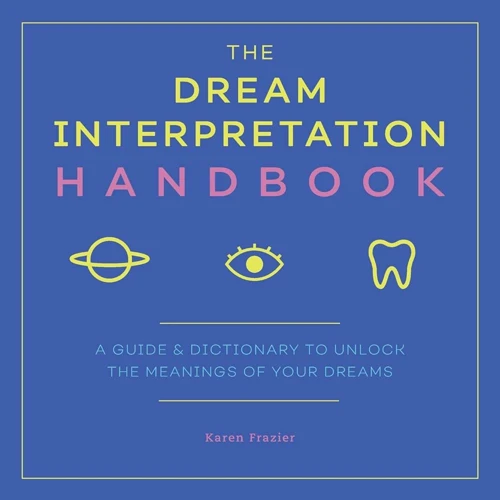
Interpreting dream symbols is a fascinating endeavor that allows us to tap into the rich tapestry of our subconscious. Common dream symbols and their meanings play a significant role in decoding the messages hidden within our dreams. While there are universal symbols that hold collective significance, it’s important to recognize that dream symbolism can also be deeply personalized. These symbols often reflect our unique experiences, memories, and emotions. By exploring the connection between dreams and the unconscious mind, we can gain a better understanding of how symbols are formed and the underlying psychological processes they represent. Keeping a dream journal can be a valuable tool in deciphering these symbols, allowing us to track recurring themes and patterns over time. Additionally, examining the emotional associations attached to specific symbols can provide further insight into their meaning. Interpreting dream symbols is an art that requires an open mind, curiosity, and a willingness to explore the hidden realms of our subconscious.
Common Dream Symbols and Their Meanings
Dream symbols are rich in meaning, and understanding their significance can provide valuable insight into the messages that our subconscious mind is trying to convey. Here, we will explore some common dream symbols and their meanings. One prevalent dream symbol is water, which often represents emotions in dreams. Clear, calm water may symbolize tranquility and emotional balance, while turbulent or murky water can signify emotional turmoil or uncertainty. Another commonly encountered symbol is falling, which typically represents feelings of insecurity, fear of failure, or a loss of control in waking life. Dreams involving flying often symbolize a sense of freedom, empowerment, or the desire to escape from constraints. Additionally, dreams about being chased often symbolize avoidance, fear, or a need to confront unresolved issues. These are just a few examples of the myriad symbols that may appear in dreams. It is essential to note that the interpretation of dream symbols can vary depending on the individual’s unique experiences, beliefs, and personal associations.
Personalized Symbolism in Dreams
Dreams are deeply personal experiences, and the symbolism within them is highly subjective. Each individual carries their own unique set of beliefs, experiences, and emotions, which shape the personal symbolism that manifests in their dreams. Personalized symbolism in dreams refers to the specific meanings and associations that certain objects, events, or themes hold for an individual. The interpretation of these symbols cannot be generalized across all dreamers, as their significance is highly individualized. For example, while a snake may traditionally symbolize fear or transformation in a dream, for someone with a positive association with snakes, it may represent healing or wisdom instead. To understand the personalized symbolism in dreams, it is essential to consider the dreamer’s personal experiences, cultural background, and emotional state. It may be helpful for individuals to maintain a dream journal to track recurring symbols and reflect on the personal significance they hold. By recognizing the unique symbolism within dreams, individuals can gain a deeper understanding of themselves and their own subconscious mind. This can lead to personal growth, self-reflection, and a greater connection to one’s inner thoughts and emotions.
The Psychological Perspectives
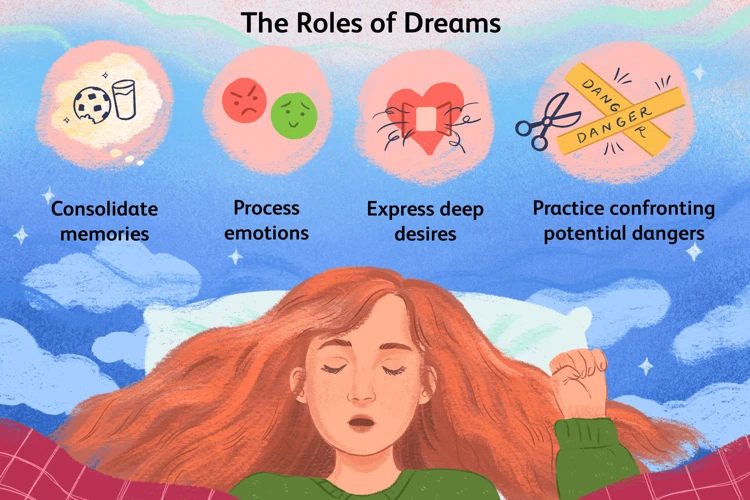
When it comes to analyzing dream symbols, psychologists have developed various perspectives that provide unique insights into the meaning and significance of our dreams. One such perspective is the Freudian approach to dream interpretation. Sigmund Freud believed that dreams were a manifestation of repressed desires and unconscious conflicts, serving as a window into the hidden aspects of our psyche. He emphasized the importance of analyzing dream symbols and uncovering their hidden meanings to gain a deeper understanding of our innermost thoughts and desires. Another influential perspective is the Jungian perspective on dream symbols, developed by Carl Jung. Jung focused on the concept of the collective unconscious, suggesting that dreams contain archetypal symbols that are universally present in human culture. These symbols hold deep meaning and can provide insights into our personal and collective unconscious. Additionally, modern approaches to dream analysis have emerged, incorporating cognitive and neuroscientific principles to understand the psychological significance of dream symbols. By exploring these different psychological perspectives, we can gain a more comprehensive understanding of our dreams and their profound impact on our psyche.
Freudian Approach to Dream Interpretation
The Freudian approach to dream interpretation, developed by Sigmund Freud, delves deep into the unconscious mind and emphasizes the role of hidden desires and repressed thoughts in dreams. According to Freud, dreams serve as a pathway to the unconscious, revealing our deepest wishes, fears, and conflicts. One key aspect of Freud’s theory is the concept of the “manifest content” and the “latent content” of dreams. The manifest content refers to the surface-level storyline of the dream, while the latent content represents the underlying, symbolic meaning. Freud believed that dreams were a form of wish fulfillment, allowing us to act out forbidden or unattainable desires in a safe, imaginary space. Through the analysis of dream symbols and free associations, Freud argued that the true meaning of a dream could be uncovered. Additionally, Freud introduced the Oedipus complex, suggesting that dreams often contain sexual and aggressive imagery. While some contemporary psychologists critique Freud’s theories for being overly focused on sexual themes and lacking scientific evidence, his influence on dream interpretation remains significant. Understanding the Freudian perspective can offer valuable insights into the hidden motivations and desires that shape our dreams and aspects of our psyche.
Jungian Perspective on Dream Symbols
The Jungian perspective on dream symbols offers a unique and profound understanding of the unconscious mind. According to Carl Jung, dreams are a gateway to the collective unconscious, a shared reservoir of archetypes and symbols that goes beyond personal experience. In Jungian dream analysis, symbols take on a collective meaning that transcends individual interpretation. Jung believed that dreams contain important messages from the unconscious, seeking to bring about balance and wholeness in our psychological makeup.
Key concepts in the Jungian approach to dream symbols include individuation, anima and animus, and the shadow. Individuation refers to the process of self-realization and becoming whole, which is reflected in our dreams. Anima represents the feminine aspect within men, while animus represents the masculine aspect within women. These archetypal figures appear in dreams to provide insight into the integration of masculine and feminine qualities within ourselves. The shadow is another important concept, representing the unconscious aspects of our personality that we prefer to suppress or ignore.
Jung believed that by exploring and understanding these symbols present in our dreams, we can gain a deeper understanding of ourselves and uncover hidden aspects of our psyche. Symbolic imagery, recurring themes, and patterns in dreams serve as pointers towards personal growth and self-discovery. It is through the exploration of these symbols that we can tap into the collective wisdom of humanity, gaining insights and guidance on our journey towards self-realization and individuation.
Here are some examples of common dream symbols from a Jungian perspective:
- Water: Symbolizes the unconscious mind, emotions, and the realm of the unknown.
- Animals: Represent archetypal energies, instincts, and primal aspects of our nature.
- The Wise Old Man/Woman: Represents wisdom, guidance, and the integration of knowledge.
- Masks: Symbolize the different personas or roles we adopt in different situations.
- Bridges: Indicate transitions, connections, and the crossing from one phase of life to another.
By examining these symbols and reflecting on their personal significance, individuals can gain a deeper understanding of their own journey towards wholeness and individuation. The Jungian perspective on dream symbols provides a rich framework for exploring the depths of the unconscious and harnessing the transformative power of dreams.
Modern Approaches to Dream Analysis
Modern approaches to dream analysis have evolved and expanded upon the traditional Freudian and Jungian perspectives. These approaches acknowledge that dreams are highly subjective and deeply personal experiences influenced by various factors such as culture, context, and individual psychology. One modern approach is Cognitive Behavioral Therapy (CBT), which aims to identify and challenge negative thought patterns and behaviors. In the context of dream analysis, CBT focuses on examining the underlying beliefs and emotions associated with dream symbols. Another modern approach is the Transpersonal perspective, which explores the spiritual and transcendental aspects of dreams. This approach recognizes that dreams can offer insights into higher states of consciousness and the interconnectedness of all beings. Additionally, neuroscientific research and advancements have contributed to the understanding of dreams with the help of brain imaging techniques, shedding light on the neural processes and functions associated with dreaming. These modern approaches to dream analysis provide a more holistic and individualized understanding of dream symbolism, enabling individuals to explore their dreams from a multidimensional perspective and gain deeper self-awareness.
How to Analyze Dream Symbols
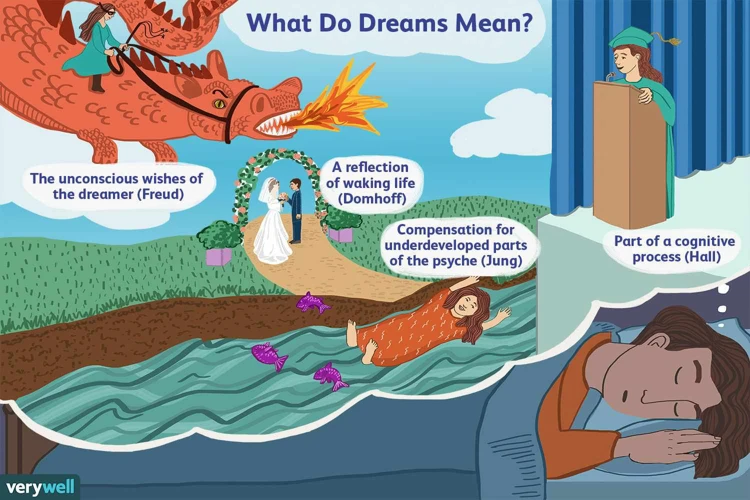
Analyzing dream symbols is a fascinating journey that requires a systematic approach to unravel their hidden meanings. One valuable method is keeping a dream journal, where you record your dreams upon waking. This practice helps you recall details and identify patterns that may emerge over time. Another essential aspect is exploring emotional associations. Pay attention to the emotions you experienced during the dream and examine why they were present. These emotional cues can offer valuable insights into your subconscious desires, fears, or unresolved issues. Additionally, examining personal context is crucial. Consider the events, people, and situations that are presently influencing your life. Your dreams may incorporate elements from your waking life, reflecting and processing these experiences. By applying these techniques, you can begin to decipher the symbolism in your dreams and gain a deeper understanding of yourself.
Keeping a Dream Journal
Keeping a dream journal plays a crucial role in analyzing dream symbols and uncovering their psychological significance. By recording our dreams immediately upon awakening, we capture the details and emotions that may quickly fade from memory. This practice allows us to revisit and explore the symbolism in our dreams at a later time.
To start a dream journal, choose a dedicated notebook or journal that you will keep by your bedside. Place a pen or pencil alongside it for easy access. As soon as you wake up, take a moment to recall your dream and jot down any key elements that come to mind. This could include people, objects, locations, actions, or even specific colors or emotions that stood out.
It is important to write down your dreams in as much detail as possible. Include vivid descriptions, sensory experiences, and any dialogue you remember. Be transparent and honest in expressing your thoughts and feelings associated with the dream. Sometimes, drawing or sketching certain dream images can help to further capture their essence.
A dream journal not only preserves the content of our dreams but also allows us to establish patterns and connections over time. By reviewing past entries, you may start to notice recurring symbols or themes that hold personal significance. This can provide valuable clues about unresolved issues, desires, or aspects of your personality that are seeking attention.
By keeping a dream journal, you create a space for self-reflection and introspection. It allows you to engage in a dialogue with your unconscious mind and tap into the rich symbolism that lies within your dreams. With consistent practice, you will enhance your ability to remember dreams and gain deeper insights into their psychological significance.
So, make it a habit to keep a dream journal by your bedside and commit to recording your dreams as soon as you wake up. This simple yet powerful practice can unlock the mysteries of your subconscious and open doors to self-discovery and personal growth.
Exploring Emotional Associations
Exploring emotional associations is a fundamental aspect of analyzing dream symbols from a psychological perspective. Dreams are rich in emotions, and understanding the emotional experiences within a dream can provide valuable clues to its meaning. When examining dream symbols, it is crucial to pay attention to the feelings and emotions that arise during the dream and upon waking. These emotions serve as a guide to unlocking the underlying message of the dream. By delving deep into the emotional associations related to specific symbols, we can gain a deeper understanding of their personal significance. For example, a dream about flying may evoke feelings of freedom, exhilaration, or even fear. These emotions can help decipher the dream’s message and its relevance to our waking life. It is important to explore the nuances of these emotions and consider how they relate to our current circumstances or unresolved emotions. By acknowledging and reflecting on the emotional associations in our dreams, we can tap into a wealth of self-awareness and personal growth. It is worth noting that emotional associations can vary from person to person, making it essential to approach dream analysis with an open mind and a willingness to explore our individual emotional landscape.
Examining Personal Context
Examining personal context is a crucial aspect of analyzing dream symbols. Each person has a unique set of experiences, beliefs, and cultural influences that shape their understanding of the world. When interpreting dream symbols, it is essential to take into account the individual’s personal context. This includes considering their personal history, relationships, and current life circumstances. By exploring the personal context, one can uncover the hidden meanings and associations behind dream symbols.
One approach to examining personal context is to identify any recurring themes or symbols in the dreamer’s life. For example, if the dreamer frequently dreams about being chased, it may be helpful to explore any feelings of fear or anxiety they experience in their waking life. Similarly, if certain objects or people appear repeatedly in dreams, it is important to consider their significance to the individual.
Another method is to analyze the emotions evoked during the dream. Emotions serve as valuable clues to understanding the personal context behind dream symbols. By reflecting on the emotions experienced during the dream and connecting them to real-life situations, deeper insights can be gained. For instance, if a dream elicits feelings of joy and freedom, it may suggest a desire for liberation or a sense of fulfillment in the dreamer’s waking life.
Additionally, cultural and societal influences should be taken into account when examining personal context in dream analysis. Cultural symbols and beliefs can shape the interpretation and meaning of dream symbols. It is important to consider the cultural background of the dreamer and how it may contribute to their understanding of specific symbols.
Examining personal context involves considering the unique experiences, emotions, and cultural influences that shape an individual’s perception of dream symbols. By delving into personal history, recurring themes, emotions, and cultural factors, a comprehensive analysis of dream symbols can be achieved. This allows for a deeper understanding of the dreamer’s subconscious and facilitates personal growth and self-discovery.
Exploring Common Dream Themes

Dreams encompass a wide range of themes that have captivated individuals throughout history. Exploring common dream themes can provide us with a deeper understanding of our subconscious thoughts and emotions. One prevalent theme is chase dreams, where individuals find themselves being pursued by someone or something. These dreams often symbolize feelings of anxiety, stress, or the need to escape from a particular situation. Another common dream theme is the sensation of teeth falling out, which is often associated with feelings of insecurity, powerlessness, or a fear of aging. Dreams about flying also hold significant meaning, representing a sense of freedom, liberation, or a desire for transcendence. By analyzing these recurring dream themes, we can unravel the hidden messages and gain insights into our subconscious concerns and desires.
Chase Dreams and Their Psychological Interpretation
Chase dreams are a common and intriguing theme that many individuals experience during sleep. These dreams involve being pursued or chased by someone or something, often evoking feelings of fear, anxiety, and a sense of urgency. From a psychological perspective, chase dreams can be seen as symbolic representations of unresolved conflicts or challenges in one’s waking life.
Psychologists suggest that chase dreams may reflect a person’s tendency to avoid or run away from difficult situations or emotions. The pursuer in the dream could symbolize an issue or a part of oneself that is being avoided or suppressed. It can also represent external pressures or expectations that feel overwhelming.
The interpretation of chase dreams is highly subjective and can vary based on an individual’s personal experiences and emotions. For some, it may indicate a need to confront and overcome obstacles in their lives, while for others, it could highlight a fear of being pursued or a lack of control.
Another aspect to consider when analyzing chase dreams is the identity of the pursuer. If the pursuer is someone familiar, such as a family member, friend, or colleague, it may suggest unresolved conflicts or power dynamics in those relationships. On the other hand, if the pursuer is an unknown entity or a faceless figure, it could symbolize a more generalized fear or anxiety.
To gain a deeper understanding of chase dreams, it is essential to explore the emotions and situations surrounding the dream. Analyzing the context, such as the location of the chase or the presence of obstacles, can provide further insights into the dream’s meaning. Keeping a dream journal and noting recurring themes or patterns can also help uncover common threads and themes in chase dreams.
Ultimately, the true interpretation of chase dreams lies within the dreamer themselves. By reflecting on the symbolism, emotions, and personal context of these dreams, individuals can gain self-awareness and potentially identify areas of their waking lives that require attention or resolution. Understanding the psychological significance of chase dreams can provide valuable insights and contribute to personal growth and introspection.
Teeth Falling Out in Dreams: Symbolism and Significance
Teeth falling out in dreams is a common and intriguing dream symbol that carries profound symbolism and significance. When we dream about our teeth falling out, it often provokes feelings of anxiety, confusion, and vulnerability. This dream scenario is often associated with feelings of powerlessness or a loss of control in one’s life. The symbolism of teeth falling out can vary depending on the individual’s personal experiences and cultural background, but there are some common interpretations.
One interpretation of this dream symbol is related to our communication and self-expression. Teeth play a crucial role in our ability to speak and articulate our thoughts and feelings. When they fall out in a dream, it may suggest a fear of not being heard or understood in waking life. It could indicate a lack of confidence in expressing oneself or a fear of saying the wrong thing.
Another interpretation relates to our appearance and self-image. Our teeth are a prominent feature that impacts our physical appearance and smile. When they fall out in a dream, it may signify insecurities about our looks or a fear of aging and losing our attractiveness. It could also symbolize concerns about our self-esteem and how we perceive ourselves.
Teeth falling out dreams can also be associated with a sense of loss or change. Losing teeth is a natural process that occurs with growth and development. In a dream context, it could represent a fear of change, letting go of something, or a sense of loss in some aspect of life. It may reflect the fear of losing relationships, a job, or a significant life experience.
It’s important to note that dream interpretation is highly subjective. The symbolism and significance of teeth falling out in dreams may vary depending on the individual’s unique circumstances and personal associations. To gain a deeper understanding, it can be helpful to reflect on the emotions and events surrounding the dream, as well as considering any personal connections to teeth or dental experiences.
Teeth falling out in dreams hold rich symbolism and significance linked to communication, self-image, fear of loss or change, and more. Exploring the specific context of the dream and reflecting on personal experiences can provide valuable insights into the underlying meanings of this intriguing dream symbol. Understanding the psychological interpretations behind teeth falling out dreams can aid in self-reflection, personal growth, and navigating the challenges of waking life.
Flying Dreams: Insights into Possible Meanings
Flying dreams are a common and fascinating theme that often carries profound symbolic meanings. When we dream of flying, we experience a sense of freedom, liberation, and transcendence. Such dreams can represent a variety of insights and interpretations. Firstly, flying dreams may symbolize a desire for escape or release from constraints in waking life. It could indicate a yearning for liberation from responsibilities, stress, or limitations that hold us back. Flying dreams can signify a sense of empowerment and the ability to rise above challenges and obstacles. They may reflect our feelings of confidence, courage, and personal growth. Additionally, flying dreams can represent a desire for exploration and adventure, as we soar through the skies, exploring new territories and embracing the unknown. These dreams can awaken feelings of excitement, curiosity, and a thirst for new experiences. Lastly, flying dreams can also carry spiritual or metaphysical meanings. They may symbolize a connection to higher realms, spiritual enlightenment, or a sense of transcendence beyond the physical realm. Each individual’s flying dream experience may be unique, and it is essential to consider personal associations and emotions attached to the dream. Flying dreams offer valuable insights into our innermost desires, aspirations, and the potential for personal transformation and growth. By exploring the possible meanings behind these dreams, we can gain a deeper understanding of ourselves and the journeys we are on.
The Influence of Culture and Society
Culture and society play a significant role in shaping the symbolism and interpretation of dreams. Cultural symbolism in dreams varies across different societies and can be influenced by religious beliefs, folklore, and societal norms. For example, in certain cultures, dreams of water may be seen as a symbol of purification and renewal, while in others it may represent the subconscious mind. Similarly, societal conditioning influences the way individuals perceive and interpret dream symbols. Social values, expectations, and experiences can shape the meaning and significance we assign to certain symbols in our dreams. Understanding the influence of culture and society on dream symbol interpretation allows for a more nuanced and comprehensive analysis of dreams, recognizing that personal interpretations may be influenced by external factors. This recognition prompts us to consider a broader context when interpreting dreams, taking into account the cultural and societal influences that shape our understanding of dream symbolism.
Cultural Symbolism in Dreams
Cultural symbolism in dreams plays a significant role in shaping the meanings and interpretations of dream symbols. Across different cultures, there are specific symbols and motifs that hold particular significance and carry unique interpretations. These cultural symbols are deeply ingrained in the collective consciousness and reflect shared beliefs, traditions, and values. For example, in Western cultures, the symbol of a white dove is often associated with peace and purity, while in some Native American cultures, the eagle may symbolize spiritual power and connection to the divine. Similarly, colors can carry different meanings in various cultures. In Western cultures, black is often associated with darkness or mourning, while in some Eastern cultures, it represents power and mystery. Cultural symbolism also extends to animals, objects, and rituals. For instance, the lotus flower holds profound symbolism in many Asian cultures, representing enlightenment and spiritual growth. Understanding cultural symbolism in dreams requires a cross-cultural perspective and a willingness to explore the diverse interpretations and meanings attached to symbols. By recognizing and studying cultural symbolism in dreams, we can gain a deeper understanding of the rich tapestry of human experiences and broaden our perspectives on dream interpretation.
Social Conditioning and Dream Symbol Interpretation
Social conditioning plays a significant role in shaping our perception and interpretation of dream symbols. Dream symbol interpretation is not solely based on individual experiences and personal associations; it is also influenced by cultural and societal factors. Throughout our lives, we are exposed to societal norms, values, and expectations, which become ingrained in our subconscious. These collective influences affect the way we perceive and assign meaning to various symbols in our dreams.
Culture and society play a crucial role in determining the symbolism and significance of certain objects, events, or actions in dreams. For example, the color red may symbolize love and passion in one culture, while representing danger or warning in another. Similarly, cultural symbols such as animals, religious icons, or traditional rituals may hold different meanings and interpretations across different societies.
Social conditioning also shapes our understanding of what is considered acceptable or taboo in dreams. Society’s influence may dictate that certain themes or symbols are deemed inappropriate or unacceptable, leading individuals to suppress or modify their interpretation of these symbols in their dreams. This conditioning can result in individuals feeling a sense of guilt or shame associated with certain dream content that conflicts with society’s expectations.
Societal expectations and gender roles can influence the interpretation of specific dreams. For example, societal stereotypes may attribute different meanings to dreams involving assertiveness or vulnerability based on gender. These social biases can influence individuals’ understanding of their own dreams and may impact their self-perception and behavior.
Recognizing the influence of social conditioning on dream symbol interpretation is crucial for a comprehensive understanding of dreams. By examining how culture, society, and social norms shape our perception of symbols, we can gain insight into the complex interplay between the individual and the collective unconscious. It allows us to question and challenge societal expectations, embracing a more nuanced and personal interpretation of dream symbols that aligns with our own experiences and beliefs.
Conclusion
As we conclude our exploration of analyzing dream symbols from a psychological perspective, it becomes evident that dreams hold significant value in understanding the human mind and psyche. Dreams offer a gateway into the unconscious, where symbolism and hidden meanings reside. By delving into these symbols and interpreting their significance, we can gain profound insights into our thoughts, emotions, and desires.
From a psychological standpoint, dreams serve as a powerful tool for self-discovery and personal growth. They provide a means of processing and integrating experiences, as well as exploring unresolved conflicts and desires. Keeping a dream journal and examining the emotional associations and personal context surrounding our dreams can further deepen our understanding of their meanings.
The Freudian and Jungian perspectives have laid important foundations for dream analysis, uncovering the influence of the unconscious and collective symbols on our dreams. However, modern approaches to dream interpretation have also emerged, incorporating a broader understanding of the human psyche and cultural influences.
Additionally, dreams are not isolated from the influences of culture and society. Cultural symbolism and social conditioning play a role in shaping our dream symbols and their interpretations.
In conclusion, analyzing dream symbols from a psychological perspective is a captivating journey that leads to self-awareness, personal growth, and a deeper understanding of the human mind. By delving into our dreams and exploring their symbolism, we unlock the potential for a richer and more meaningful connection with ourselves and the world around us.
Frequently Asked Questions
Why do we dream?
Dreams serve various purposes, such as processing emotions, consolidating memories, problem-solving, and providing insights into our unconscious minds. They are a natural and necessary part of the sleep cycle.
Do dreams have meanings?
Yes, dreams have symbolic meanings that can provide insights into our thoughts, emotions, and desires. However, these meanings can be highly personal and may vary from individual to individual.
Can dreams predict the future?
While some people claim to have had prophetic dreams, there is no scientific evidence to support the notion that dreams can predict the future. Dreams are generally considered to be a reflection of our subconscious thoughts and experiences.
Do recurring dreams have significance?
Recurring dreams can hold significance and often indicate unresolved issues or recurring patterns in our lives. They provide an opportunity to explore and address these underlying concerns.
Are nightmares a sign of a psychological problem?
Not necessarily. Nightmares can stem from various factors such as stress, trauma, or anxiety. However, recurring or extremely distressing nightmares may indicate an underlying psychological issue and may warrant further exploration.
Why do we forget dreams?
Forgetting dreams is a common occurrence due to how the brain processes information during sleep. Dreams are often stored in short-term memory, which is easily forgotten upon waking. Additionally, the transition from sleep to wakefulness can disrupt dream recall.
Can analyzing dreams help with personal growth?
Yes, analyzing dreams can aid in personal growth by providing insights into our unconscious thoughts, desires, and fears. It can help us gain self-awareness, identify patterns in our behavior, and work towards resolving inner conflicts.
Are there universal dream symbols?
While some dream symbols may have collective or cultural meanings, it is important to remember that symbolism is often highly personal. The same symbol may hold different meanings for different individuals based on their unique experiences and perspectives.
Can dreams be influenced by external factors?
Yes, external factors such as stress, medications, substances, and daily experiences can impact the content and intensity of our dreams. These factors can shape the symbols and themes that appear in our dreams.
Should I consult a professional for dream interpretation?
Seeking the guidance of a professional, such as a psychologist or a therapist, can be beneficial if you find yourself consistently disturbed by or struggling to understand your dreams. They can provide expert insights and help in interpreting your dreams within the context of your personal experiences.

